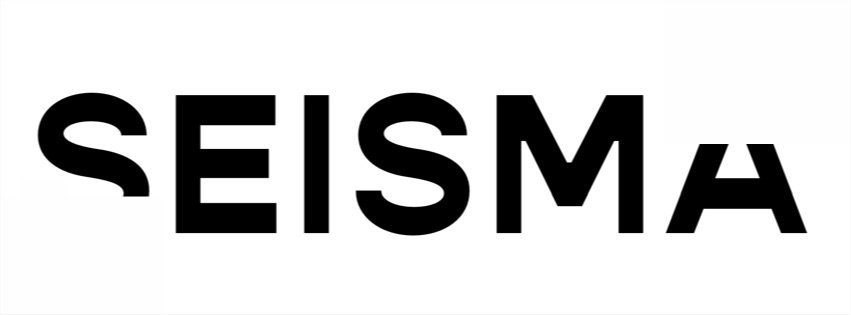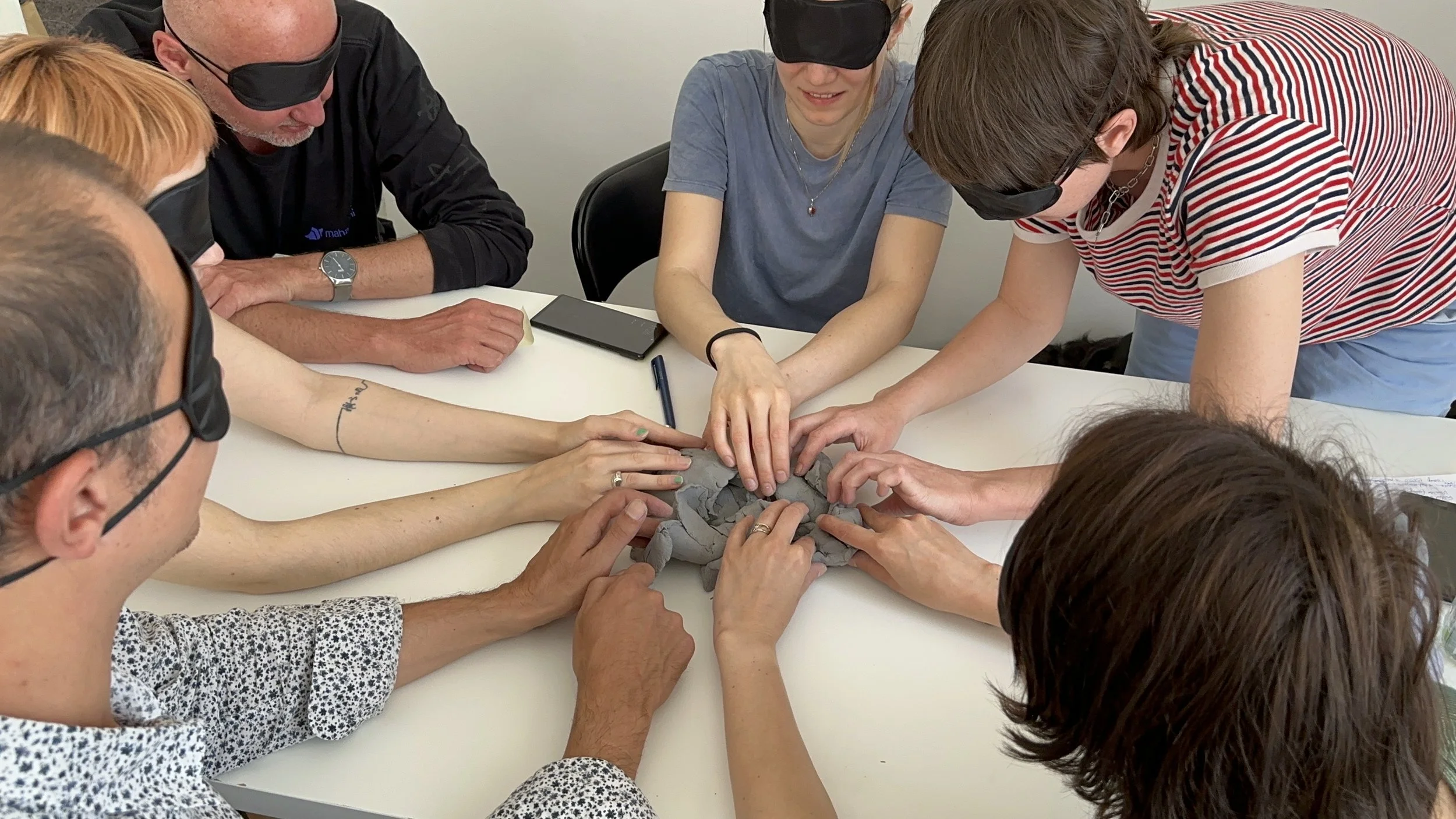REVIEW: A FINE DERANGEMENT OF THE SENSES
Tereza Stehlíková’s Exiled from Our Bodies: How to Come Back to Our Senses (Routledge, 2026) arrives at a moment when many of us feel the lingering aftershocks of enforced digital life that continue to mediate our sense of reality. In this book, the Czech–British artist and researcher asks what it might mean to resist such mediation, and to reclaim our existence in all its multi-sensory depth.
At once memoir, philosophical reflection, and artistic inquiry, the book is both intimate and wide-ranging. It belongs to Routledge’s ‘Sensory Studies’ series, edited by David Howes, and situates itself within this field, which insists that the senses are not secondary channels but primary ways of knowing. For Stehlíková, this reclamation of sensing is also a form of homecoming. “It is no coincidence,” she writes, “that this book [...], started to come together when I moved from my own London ‘exile’, back to my Prague roots, 30 years later.” The idea of home, both physical and metaphorical, threads through the work as a return to the immediacy of lived experience.
The opening chapters draw on her Prague childhood to show how place and architecture shape perception. She recalls her family’s apartment near Charles Bridge, with its spiral staircase that “created a kind of vortex in my dreaming mind, a pull of which threatened to draw me directly into its centre – the black void.” Such memories of atmosphere and material texture form the ground for her reflections on embodied cognition, where environment, sensation, and self cannot be sectioned.
The second chapter examines how our senses collaborate in “a mutual dance of influence.” Rather than separate channels, they form a web of knowledge. We are guided through examples such as mirror-touch synaesthesia to illustrate how perception and empathy interpenetrate. The body is not a passive receiver but an active participant in meaning-making. As the philosopher Mark Johnson has argued, “experience is our way of inhabiting – being at home in and with – nature.” Stehlíková echoes this, suggesting that experience is both existential grounding and ecological relation. Alienation from the earth, she warns, begins with alienation from our bodies.
One of the most powerful sections describes what she calls “visual dominance,” a condition amplified by the proliferation of screens. The pandemic intensified this trend: “Teaching, work meetings and social encounters have all moved online… The digital domain, our so-called shared space, is an abstraction, a conceptual construct. It offers no physical ‘common ground’ to meet upon.”
This is not merely a comment on too much screen time. Stehlíková argues that the screen keeps us within “our own reality bubble,” promising intimacy while deferring the touch, scent, and co-presence that constitute genuine encounter. To dramatise this, she introduces the character of Ophelia, first glimpsed through Instagram, who becomes a figure for technologically induced disembodiment: glossy surfaces masking longing, loneliness, and displacement.
Neuroscientist Anil Seth’s reminder that “we are all hallucinating all the time; when we agree about our hallucinations, we call it reality.” Seth highlights how perception is never passive reception but an active prediction of the brain. Stehlíková, in turn, shows what is at stake when the “controlled hallucination” is starved of sensory richness. If, as Seth suggests, reality is fragile because it is constructed, then Stehlíková warns that digital mediation risks narrowing that construction into what she describes as “our own reality bubble,” eroding the shared ground on which experience can take root.
Her concerns also recall Walter Benjamin’s borrowing from Duhamel: “I can no longer think what I want to think. My thoughts have been replaced by moving images.” Stehlíková shows how this substitution does not simply change perception but displaces the very seat of subjectivity, exiling us from ourselves.
What makes the book particularly praiseworthy is its openness to interdisciplinary dialogue. Throughout the book, Stehlíková places her artistic practice in dialogue with philosophy and science. One can hear an echo of Maurice Merleau-Ponty’s claim that “the body is our general medium for having a world.” For Merleau-Ponty, perception is not a detached mental act but the very way we inhabit reality through the lived body. Stehlíková, indirectly develops this idea in relation to the digital present, showing how exile from the senses is ultimately exile from the world. Her emphasis on embodied reciprocity brings Merleau-Ponty’s mid-century philosophy into urgent conversation with today’s crisis of disembodiment.
The anthropologist Tim Ingold also enters the conversation. Reflecting on the shift from analogue to digital, he notes that the word digital derives from digits (fingers) once tied to material engagement. Arithmetic, he reminds us, once meant “a harmonious interconnection of materials which participate in each other’s formation.” For Ingold, as for Stehlíková, the loss of such interconnection marks a deep cultural rupture, a disconnection where once there was continuity.
If the book diagnoses disembodiment, it also proposes artistic counter-practices. Stehlíková recounts her projects such as Across the Unseen Sea: Journey of Unsettling Perceptions (2013) and the pandemic film Self-Isolation Dinner (2020), where food, touch, and cinema intermingle. These immersive works resist “our deeply entrenched habits of passive consumption, including those of our technologically mediated reality.” Instead, they create liminal spaces in which perception can be unsettled and reconfigured.
Such practices are not escapist. They are, in her words, “alternative ways of knowing, knowing through doing, through encountering, through experiencing.” By reawakening the body’s capacities, they offer forms of resistance to the passivity imposed by digital culture.
At the heart of Exiled from Our Bodies lies an ecological concern. As Stehlíková insists, “to even begin to address the current environmental crisis, we must first return to our bodies and come back to our senses – literally and figuratively.” Alienation from the environment is inseparable from alienation from sensation. Conversely, cultivating reciprocity between body and world can open what she calls “a more conscious, engaged and aesth-ethical way of inhabiting the world.”
David Abram, author of The Spell of the Sensuous, praises the book as “an intersensory and interdisciplinary feast” that may “induce a fine derangement of the reader’s senses.” The point is not to restore some lost unity but to generate new, crossmodal ways of knowing that make us more attentive to ecological interdependence.
As a work of theory and practice, Exiled from Our Bodies refuses neat categorisation. Its hybrid form – part travel diary, part philosophical treatise, part artistic portfolio – might unsettle readers expecting linear argument. But this hybridity is the book’s strength; it mirrors the interdisciplinary weaving that Stehlíková advocates, where art, philosophy, and science converge in lived experience.
Unlike many critiques of digital mediation, hers does not collapse into nostalgia. She acknowledges that technology brings safety, productivity, and even moments of magic. Yet she insists that such tools must be approached critically, with “critical feeling as well as thinking.” The goal is not to abandon technology but to re-enliven it, making it serve embodied reciprocity rather than replacing it.
In the end, the book functions as both diagnosis and invitation. Diagnosis of the exile we risk when we give ourselves over wholly to the screen, and invitation to return to our senses, to our bodies, and to the world. “We are floating in ether,” she writes, “looking for a way back home.” Her work suggests that the way back begins with touch, taste, scent, and sound, and with the courage to pay attention to the richness that still surrounds us.
Exiled From Our Bodies: How to Come Back to Our Senses is now available from Routledge and other retailers.
Further information about Dr Tereza Stehlíková and her work can be found on her website here.
Bibliography
Abram, D. (1996). The spell of the sensuous: Perception and language in a more-than-human world. Vintage Books.
Benjamin, W. (1968). ‘The work of art in the age of mechanical reproduction’, in Arendt, H. (ed.) Illuminations. Translated by H. Zohn. New York: Harcourt, Brace & World.
Ingold, T. (2011). Being alive: Essays on movement, knowledge and description. Routledge.
Johnson, M. (2007). The meaning of the body: Aesthetics of human understanding. Chicago, IL: The University of Chicago Press.
Merleau-Ponty, M. (2012). Phenomenology of perception (D. A. Landes, Trans.). Routledge. (Original work published 1945).
Seth, A. (2021). Being you: A new science of consciousness. Faber & Faber.
Stehlíková, T. (2026). Exiled from our bodies: How to come back to our senses. Routledge.
All images shown courtesy Tereza Stehlíková and Routledge ©️Tereza Stehlíková. All rights reserved.






